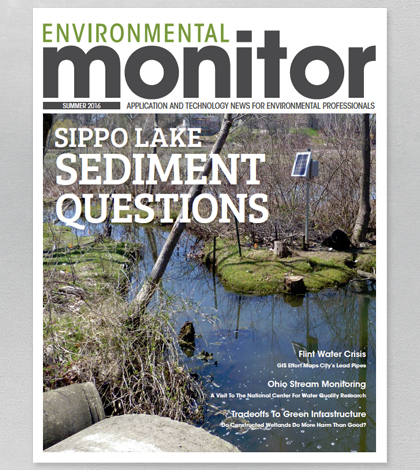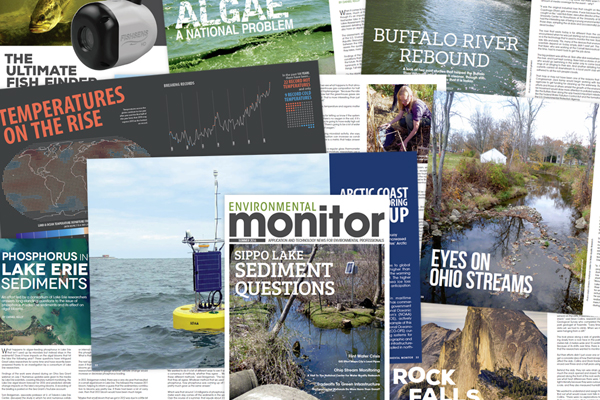Summer 2016 Environmental Monitor Out Now

The Summer 2016 edition of the Environmental Monitor magazine is out now and available for reading in digital format. Our quarterly editions round up the best of the Monitor’s online coverage and update featured stories with new photos and graphics.
Quarterly editions of the magazine also chip in new content, like featured photos, infographics and some of the latest monitoring gear. We also throw in a comic and crossword just for fun. Sign up for a free subscription to the Environmental Monitor here. If you’d like to peruse some of our past editions, check out our issue archive.
The highlight of this most recent edition is a series of stories that take readers on location to learn about important environmental research as it’s happening. Our biggest spread features a visit to Heidelberg University’s National Center for Water Quality Research, a center for stream monitoring in Ohio that regularly shares its nutrient data to inform Lake Erie algae bloom forecasts and watershed management efforts throughout the state. We also stop by Canton, Ohio’s Sippo Lake to see how managers with the Stark County Park District are studying the lake’s impacts on outflow sediment loads and to learn how the data are inspiring and supporting efforts to educate local youth about their home lake. And our last on-location feature showcases efforts by researchers at Northern Kentucky University who are pinpointing tradeoffs of constructed wetlands, with an eye toward the balance they achieve between improving water quality and emitting greenhouse gases.

A few of our favorite spreads and stories from the Summer 2016 Environmental Monitor. (Credit: Nate Christopher / Fondriest Environmental)
This edition also features work by scientists at the University of Michigan, Flint, as they wrap up a project to map the city’s lead pipes, which were surprisingly lacking in official records. A spread on the first-ever National Lakes Assessment details the widespread nature of algal blooms around the United States. Another feature takes a look at how the National Oceanic and Atmospheric Administration is responding to a changing Arctic, as experts there put a developing monitoring platform through its paces ahead of expanded monitoring in the United States’ Arctic Exclusive Economic Zone.
There are a few more spreads you don’t want to miss. Make sure to read about efforts by a consortium of Lake Erie researchers studying the lake’s sedimentary phosphorus and its effects on the lake’s algal blooms year over year. Dig into coverage of the Buffalo River, where we take a look at investigations that took place both before and during its resurgence as a cleaner and steadily improving waterway. And last but certainly not least, our infographic this go-around covers climbing global temperatures and gives perspective on how they’ve changed over time.
As always, it is our pleasure to bring you the latest on advancements, trends and ongoing projects in the environmental monitoring field. Thanks for reading and make sure to stay tuned as we continue to bring you more exciting stories in the future.




0 comments